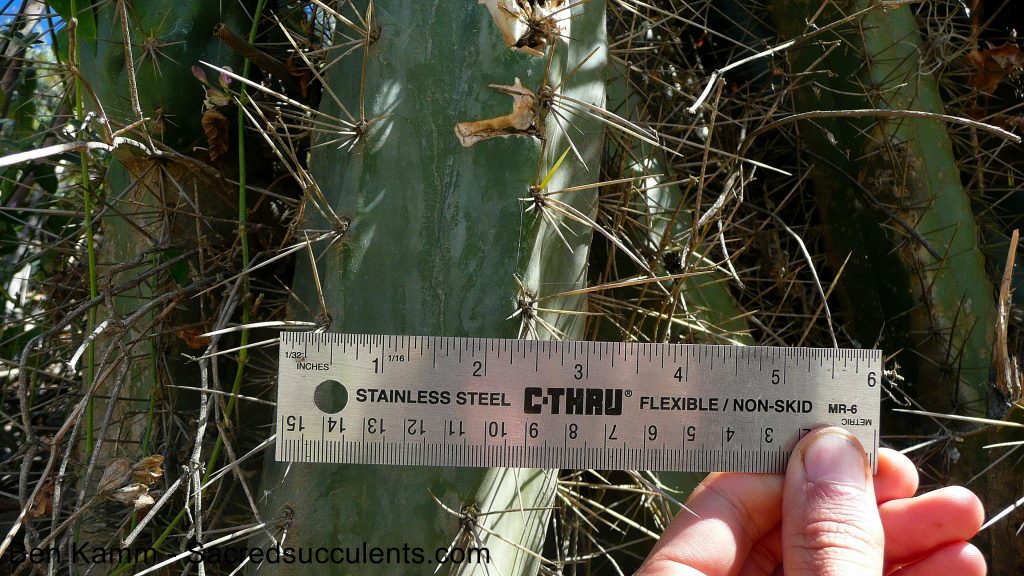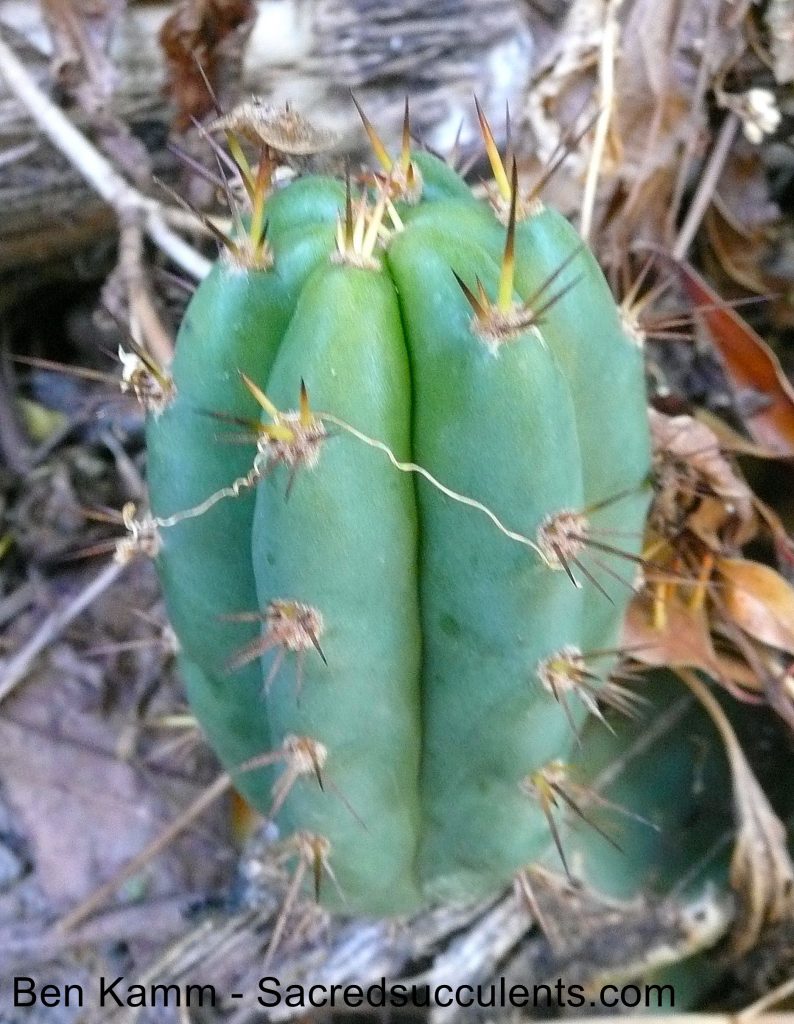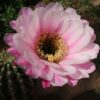
Trichocereus riomizquensis is a Bolivian Trichocereus species that is closely related to Trichocereus bridgesii. I count it as a close relative and potential regional form of Trichocereus bridgesii, which is only endemic to one site in Bolivia near the Rio Mizque.
The species was discovered and described by the German cactus field botanist Friedrich Ritter, who gave Chuyllas as the type locality and described it growing on steep slopes in the province Campero.
His Field Number was FR 856. Friedrich Ritter was one of the leading Cactus experts of his time and successfully ran a seed shop, in which he sold this species as seed to people all over the world. Trichocereus riomizquensis was also visited during the Sacred Succulents Fieldtrips and they found a couple of different types growing around that area.
In Ritter´s book, he published a photo of this species. Unfortunately this photo is not very good and it is one of the species that are rare in cultivation. Almost all labels on plants grown from Ritter´s seeds are lost, but the plant is definitely available. On the market, it sometimes shows up labeled as Trichocereus bridgesii, or probably also labeled as Trichocereus PC. Please note that there is a wide variety of plants from this site and the range is very big, ranging from spiny to completely spineless plants.
Ben Kamm published some photos of a Herbarium specimen that was very close to Trichocereus bridgesii as well.
Where to buy seeds and plants of Trichocereus riomizquensis?:
Though Trichocereus riomizquensis is common in cactus collection in the USA, it is usually mislabeled. Sacred Succulents were giving away seeds after their Field Trips and some plants might have gotten into the hands of collectors. They are also selling live plants grown from their collected seeds sometimes.
Description of Trichocereus riomizquensis:
This is partial description of Friedrich Ritter´s original description, including remarks on how to keep it apart from T. scopulicola.
Trichocereus riomizquensis is 6-8 centimeters thick (while Trichocereus scopulicola is 8-10 centimeters thick), it has 5-6 ribs, (T. scopulicola: 4-6), its flanks are 2 centimeters wide (Scopulicola 3-4 cm wide flanks), the flanks are less rounded than the ones on Tr. scopulicola. It has rounded areoles (while the ones on T. scopulicola are usually oval). The areoles have a very visible fluff with a diameter of 2-3 mm. The 1-5 spines are honey-colored and between 1-3 mm long. Sometimes they are even missing.
The flower of Trichocereus riomizquensis is 20 centimeters long (while the flowers of T. scopulicola are 16-20) and covered with dark brown/white wool with large scales. The fruit looks knobby.
Type locality: Chuyllas near the Rio Mizque, on very steep rock walls in the province Campero, Bolivia. Discovered from Ritter in 1958 – FR 856.

Ritter´s original photo of his Trichocereus riomizquensis. It is possible that this plant is the same strain as the American PC clone, which gets very close to this plant´s phenotype. However, DNA testing needs to be done to verify. The photos show two VERY similar plants though.

In comparison to Ritter´s plant, check out the PC Trichocereus clone above. (Forest and Kim Starr)

This is one of the plants from the Sacred Succulents Field Trips:
Copyright Ben Kamm, Sacredsucculents.com
Trichocereus Riomizquensis BK 10.08.7
BK10512.1 Trichocereus riomizquensis, Totora, Cochabamba, Bolivia
Trichocereus riomizquensis is one of the most interesting species from the Sacred Succulents Field Trips because of its incredible range. Some plants look like the Trichocereus bridgesii-type plants with long spines from the Field Trips and some other ones look like the short spine versions that Friedrich Ritter´s description was about.
If you take a close look at the whole appearance of this plant, you can see that it has a similar areole shape to the areoles on the well known Trichocereus PC clone, also known as predominant cultivar or predominate cultivar. The flower and the overall appearance are so similar that everything else would be extremely surprising. Despite the fact that there are some very spiny plants at this site, there are some other which get extremely close to Ritter´s original photo. Though this will probably never be proven, there´s definitely reasonable doubt that this PC clone is actually a Trichocereus pachanoi.
There is a lot variation within the populations the original site near the Rio Mizque. This population is one of the most interesting Trichocereus populations out there and DNA testing should absolutely be made to look into its relationship to Trichocereus bridgesii.
Where to buy seeds or cuttings of Trichocereus riomizquensis:
Well, Ben and Sacred Succulents would be my starting point if I were in the USA. They don´t ship plants internationally, but if you have the luck to be in the country you might be able to get some cuttings. Apart from this, I do not know any sources for this species. Most of Ritter´s old plants have lost their labels meanwhile, which makes getting one even harden. I am sure that some of them show up on online market places labeled as Trichocereus bridgesii every now and then.

Copyright: Ben Kamm, Sacredsucculents.com
BK10512.4 Trichocereus riomizquensis, Totora, Cochabamba, Bolivia 2010
This photo here looks really unspectacular, but shows the area of the Rio Mizque. It is the place of origin of this rare species and most of the plants that can be found there are obviously Bridgesii related.
Check out our main plant database page for Trichocereus pachanoi aka Echinopsis pachanoi here:
And Trichocereus bridgesii here:
And this article I wrote about PC
Also check out our Trichocereus Facebook group here:



















